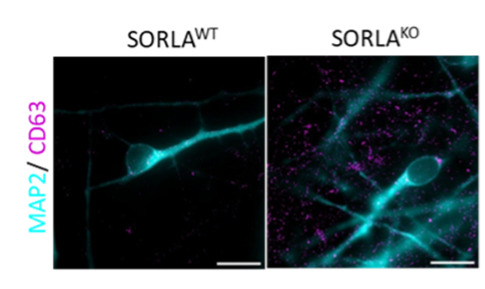Riegerová Petra, RNDr., Ph.D.
About me:
Throughout my scientific career, I have focused on intracellular molecular processes involved in virus-induced carcinogenesis, angiogenesis, and apoptosis. I was also involved in projects requiring skills in protein expression and purification and single molecule fluorescence microscopy techniques. Given the variability of the topics I have developed expertise spanning molecular and cell biology, fluorescence microscopy, as well as biochemistry and biophysics.
In recent years, my research has increasingly shifted toward understanding the cellular mechanisms underlying neurodegenerative disorders development, with a particular focus on Alzheimer’s disease (AD). My current research project, funded by GACR from January 2025, investigates changes in the subcellular processing of intraluminal vesicles and their role in mediating cellular responses that contribute to neurodegeneration. Today, AD affects a growing number of individuals, yet reliable early diagnosis and effective treatment remain insufficient due to an incomplete understanding of its molecular basis. Contributing to this field not only allows me to apply and expand my expertise but also provides the opportunity to be part of a highly prominent area of research.
About project:

Exosomes are extracellular vesicles that play a crucial role in molecular sorting, trafficking, and clearance. By transmitting signaling molecules, exosomes mediate neuronal communication and contribute to cellular homeostasis. In Alzheimer’s disease (AD), exosomes facilitate the spread of misfolded proteins, including amyloid-beta and phosphorylated tau and by induction of apoptosis, contribute to neuronal loss. However, the molecular mechanisms underlying exosomes biogenesis and release in the context of AD cytopathology are not fully understood.
The project will examine how AD-related environmental stress or genetic background influences exosome biogenesis and release. Using confocal and super-resolution imaging, we will focus on analysis of the subcellular distribution of intraluminal vesicles and their co-localization with AD-associated in human neurons derived from AD patients and healthy controls. Biochemical and physicochemical characterization of isolated vesicles will further assess their content, size, and mechanical properties. The outcome of the study will contribute to understanding the mechanisms underlying exosome biogenesis and reveal novel clinical markers in the early diagnosis of neurodegeneration.
Financial support is provided by the Czech Science Foundation under grant number 25-16481S.
Collaborations:
Dáša Bohačiakova's laboratory at Masaryk University, Brno.
List of publications on Google Scholar


